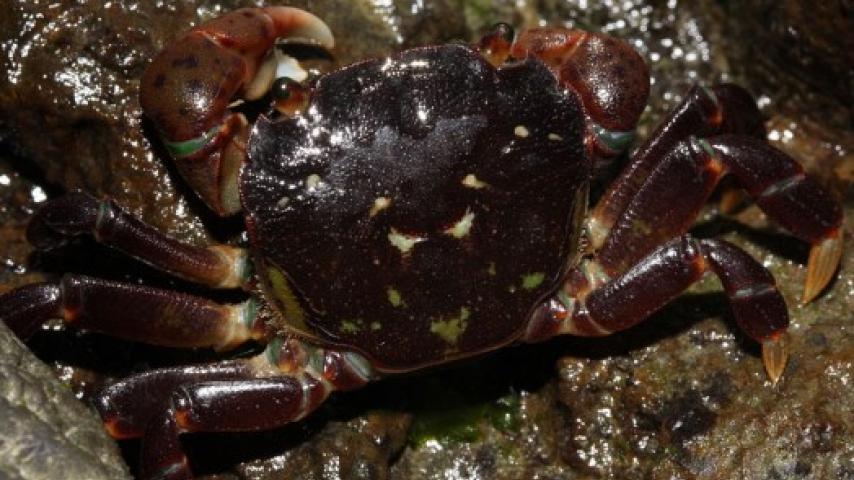Purple Shore Crab (Hemigrapsus nudus)
Shore crabs are members of a large group called grapsoid crabs that dispel the notion that crabs are only marine animals.

KINGDOM Animalia - PHYLUM Arthropoda - CLASS Malacostraca - ORDER Decapoda - FAMILY Varunidae
Not only are they the dominant crabs along shorelines in many parts of the world, but many of the species are “land crabs,” common in terrestrial habitats at and near the coast in tropical latitudes. Some of them ascend tropical streams and rivers to high elevations in the mountains. Grapsoids have in common a body that is more or less square.
The Purple Shore Crab occurs from southern Alaska to northern Mexico along the Pacific coast. Adult crabs are usually purple but vary to reddish brown or even olive or yellow; younger ones are even more variable. The largest adults have a carapace width of 56 mm in males and 34 mm in females.
Shore crabs are most common on rocky coasts but may occur in brackish estuaries. They are easily found on and under boulders and cobble, where they can reach high densities. Most of their feeding is on green algae and single-celled organisms such as desmids and diatoms, but animals such as tiny crustaceans, newly growing bivalves, and even snail eggs make up a minor part of their diet. They are in turn eaten by fish, gulls, and scoters.
Mating occurs during midwinter, the male clasping a female by her chelipeds and guiding her to fertilization with his walking legs. The first pleopods (swimming legs) of the male are modified to transfer sperm to the female. Female crabs have wider abdomens than males, allowing them to carry masses of fertilized eggs around until they hatch. The largest females may produce clutches of over 30,000 eggs at one time.
Shore crabs are not always easy to catch, but when you do catch one, watch out; they can pinch! Claws notwithstanding, they are eaten by fishes, diving birds such as loons, and gulls.